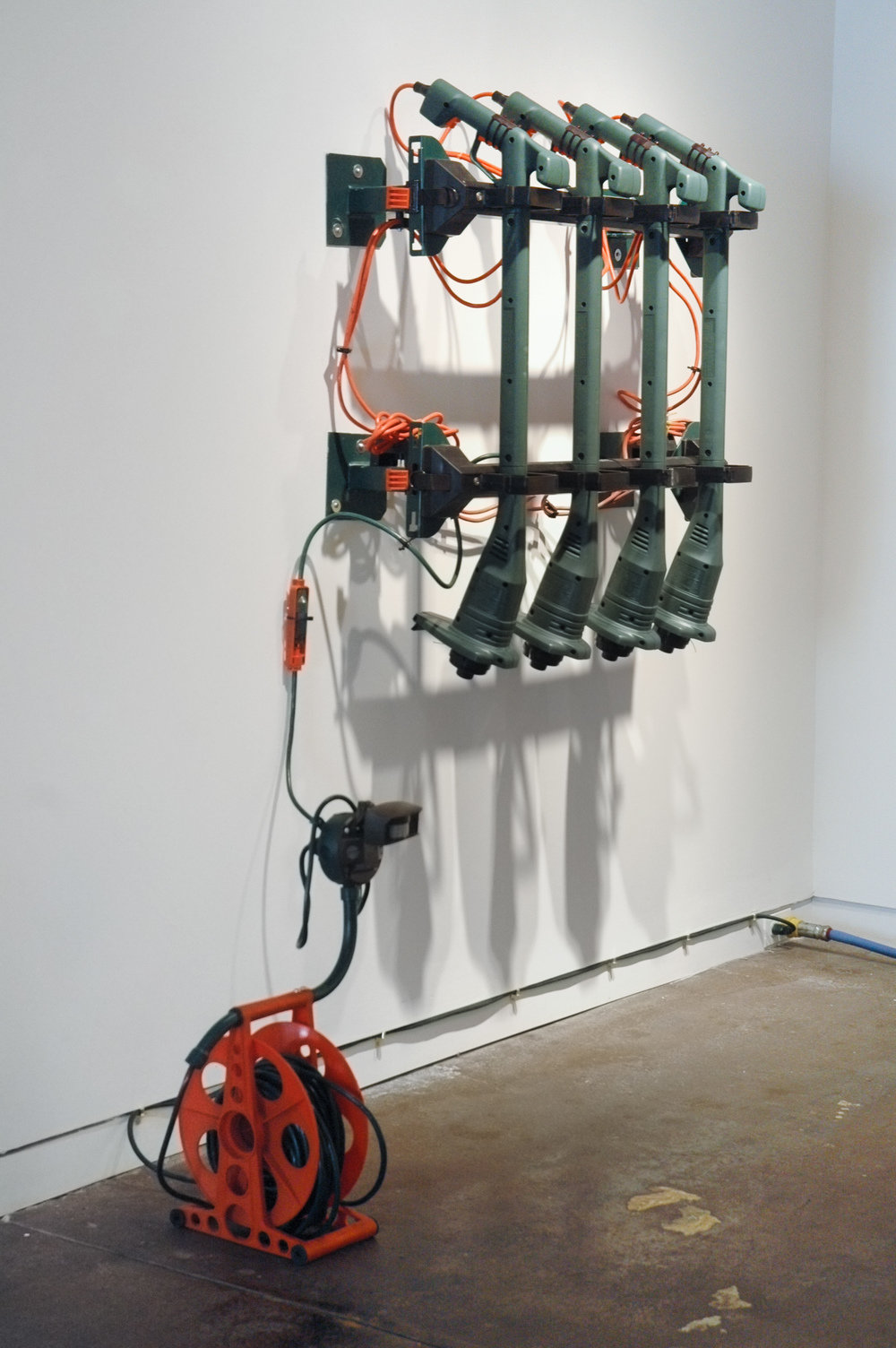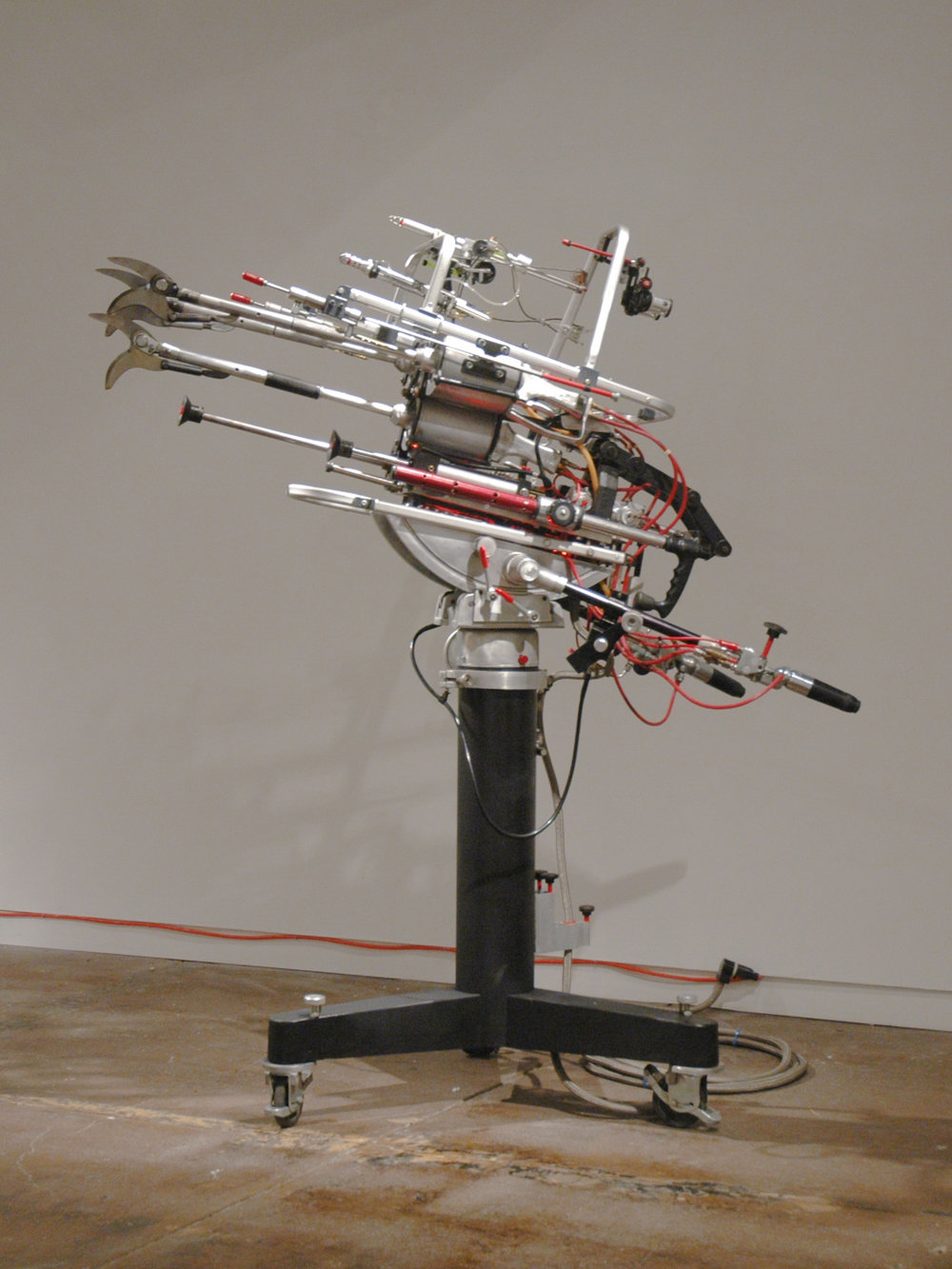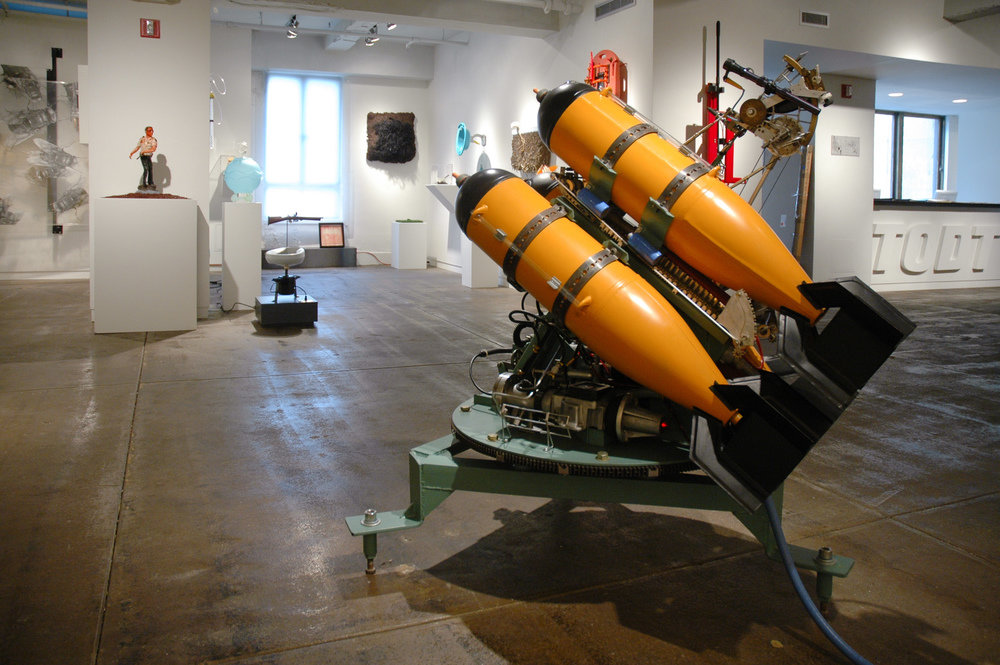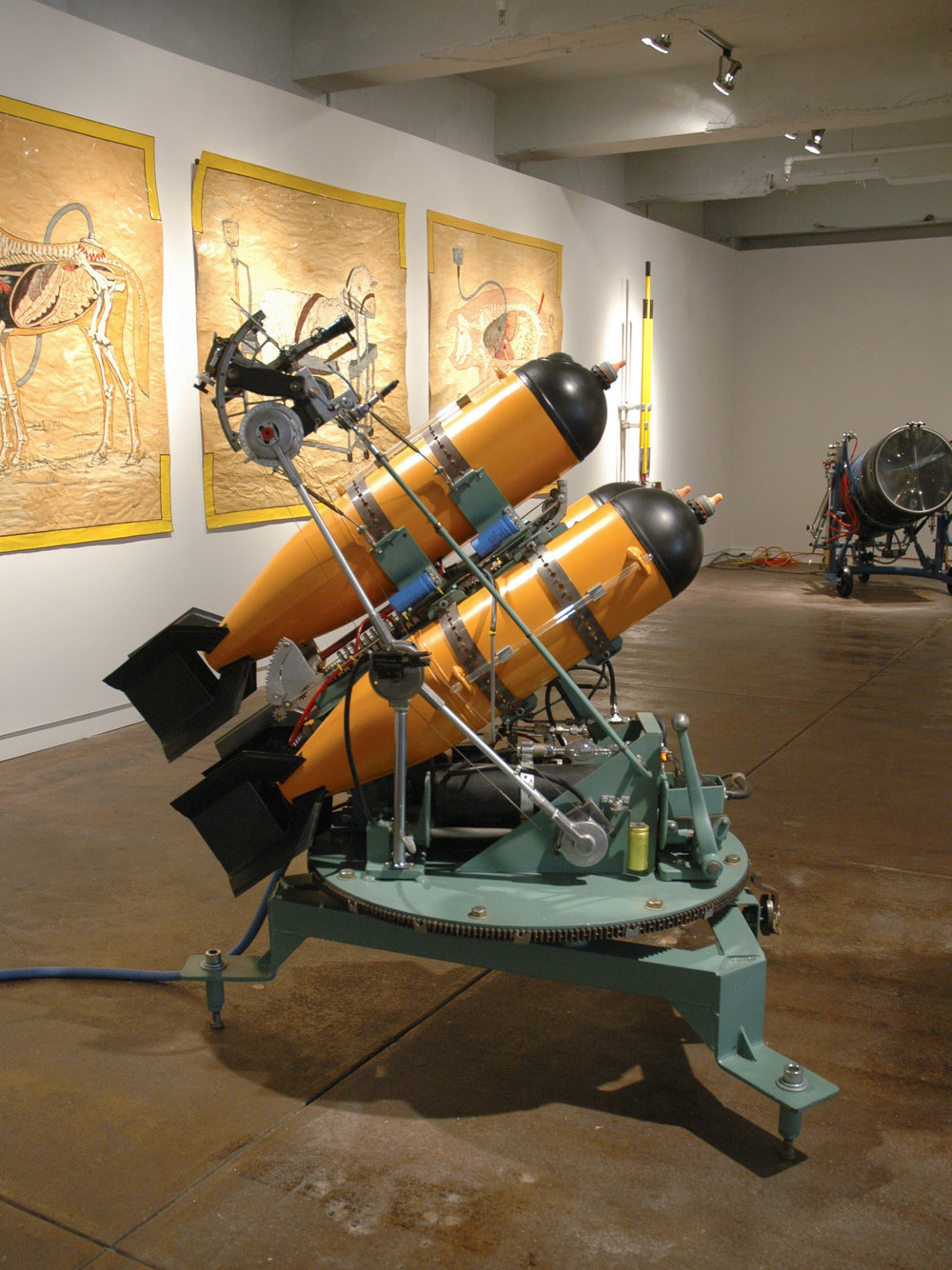Installation




Apr 20 — May 26, 2007
Featuring work by: TODT
TODT were among the most seen and most present artists of the 1980s. After gravitating south to the city from upstate New York in 1978, a pathological practice of political stenciling and wheatpasting became a massive machine of production, of sculpture, immersive environments and politics at billboard volume. TODT appeared shoulder to shoulder with every important installation artist of the era, in significant exhibitions at P.S. 1 in 1982 and 1984, the Whitney Biennial in 1985, the Blum Institute of Art at Bard College in 1987, the Brooklyn Museum in 1990, and group and solo shows at Kent Fine Art, P.P.O.W. and Luhring Augustine Hodes throughout the decade. Before Battery Park City was filled in to expand the heft of New York’s financial district in 1985, TODT was asked to contribute to the final summer of Creative Time’s Art on the Beach initiative. An extant photograph shows a soaring faceted scaffold of polished scrap metal cradling two glinting bombs a few stories up in the air. The missiles are pointed, one each, at the twin towers. A moment all but subsumed by subsequent imagery of shock and awe, this singular photograph should be remembered among the most definitive period pieces of evidence. It sums up the total effect of TODT: prescient; in tune with the material stuff of contemporary times; eerie and shamanistic.
A homemade defense system, the missiles are protecting the twin towers and fthe financial ecosystem behind them.
Though the group did not slow down, in the 1990s TODT found fewer venues would show their work at the scale it was conceived. Large institutions and progressive museums began to shy away from their practice, implicitly, then, deeming it difficult. TODT’s extreme content was not really the problem, though in the climate of the culture wars it was often considered so. It was more that TODT refused to sacrifice their method or their messages to artistic fashion. Given an opportunity to join in on art history-in-progress by simplifying or streamlining their style and working with the art world, TODT, instead, continued its dogged pursuit of its core values. TODT is the name of the family and TODT is indeed family, a terribly unfashionable thing to be in a swinging, opportunistic scene. Their protection of their group practice became the most perverted and threatening thing about them. Speaking of their unified identity in 1987, Linda Weintraub asserted that “all voices claim their air space simultaneously, and listening coincides with speaking,” a gift of temperance and emotional give-and-take, an increasingly rare commodity in the hopped-up commercial contemporary market.
TODT After Next, the group’s first exhibition with Fleisher/Ollman Gallery and a project two years in the making, includes large scale sculptural ‘machines,’ smaller ‘products,’ ephemera and works on paper, all dating from the late ‘70s to 2007. Though in many conventional ways a survey, spanning their evolving concerns of technology, biology and humanity, this show exists as a self-contained environment, one constructed on site and in-depth. We are delighted and privileged to introduce TODT’s work and methods to a new generation of artists, and re-place and remind their practice to the recent history books. An in-house artists’ monograph produced for the exhibition includes a curated portfolio of archival images, many never seen before, TODT in their own words, and a commissioned essay from party-man scholar Brendan Greaves on war and ecology, the longest thesis yet written on the group.



